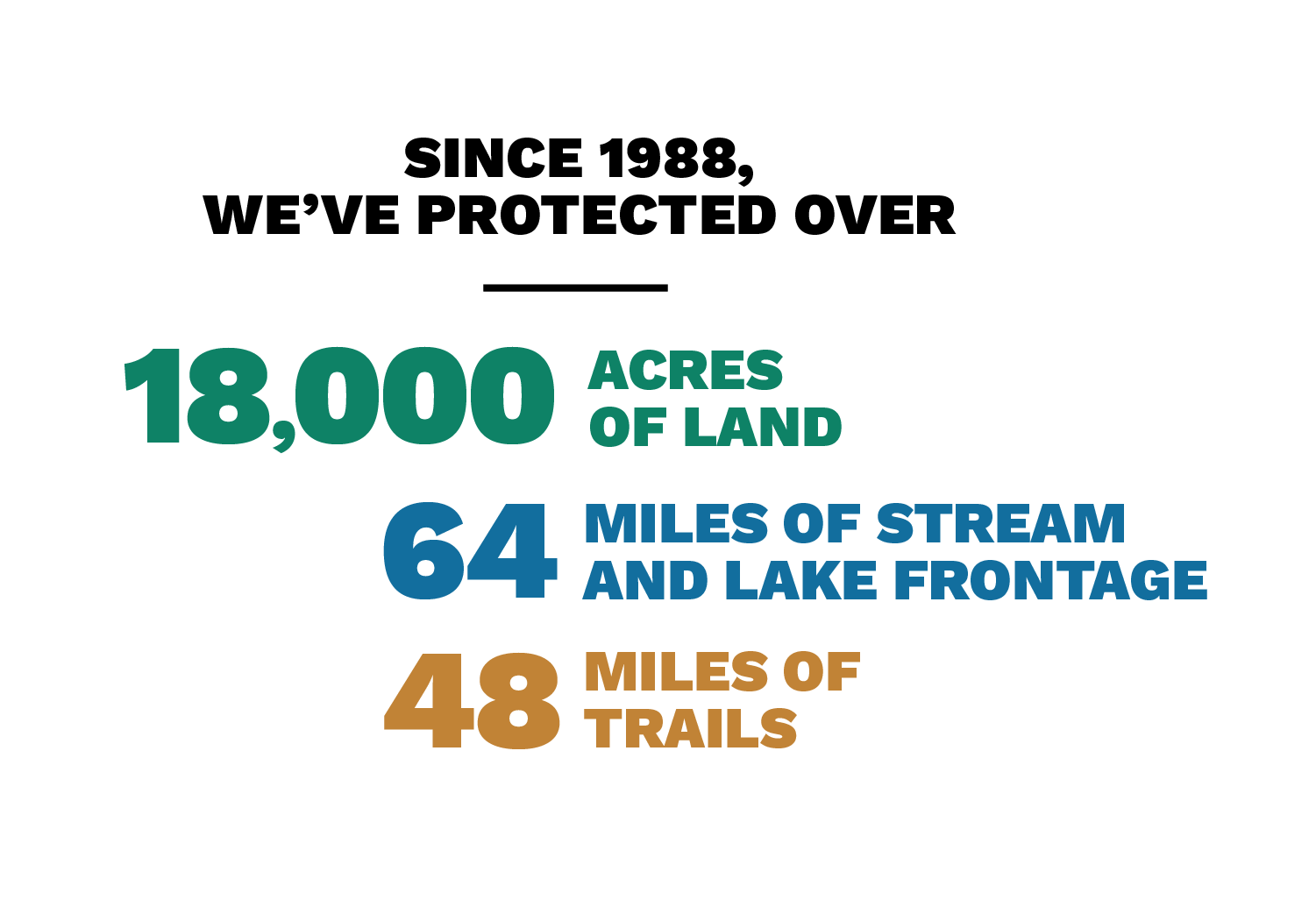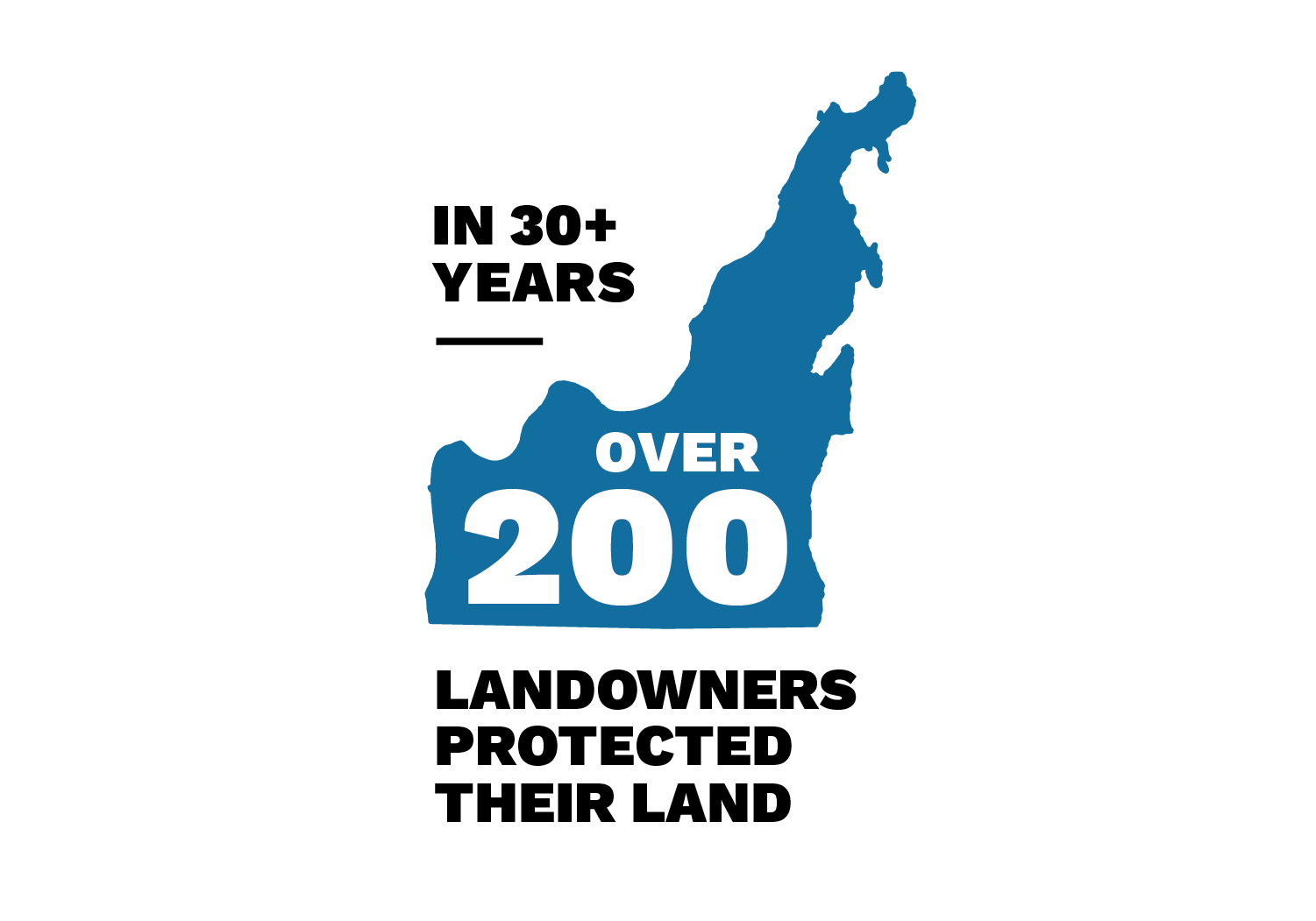A Wild Idea: Doug and Ann McInnis Believe in Wildlife Corridors
From our Fall 2002 Newsletter
The phrase “wildlife corridor” doesn’t mean much to a red-shouldered hawk. What does is having access to two disparate habitats critical to its survival. This “species of special concern” must be privy to upland forest, where it will lay 2 or 3 brown-spotted eggs in a bulky nest of twigs and leaves. Equally crucial to this large-winged hawk is finding a nearby swampy woods or bog. Here, it perches quietly on a low branch, swooping down to feed on snakes and toads.
Thanks to a contingent of neighbors near the tip of the peninsula, hundreds of creatures like the red-shouldered hawk can live, move and reproduce along a corridor that stretches from Cathead Point to Northport Bay (see map). The most recent landowners to join in the effort to provide a contiguous, safe haven for wildlife are conservation buyers Doug and Ann McInnis and Wood and Bonnie Palmer. Together with the Conservancy, they are preserving 80 acres.
“These four are providing a vital link,” says the Conservancy’s Brian Bourdages. “Their lands are a crucial part of our largest conservation corridor. They join three other families who are committed to the area’s long-term preservation.” The McInnis and Palmer properties are part of the swath that contains everything from shoreline to dunes, wetland to forest. Such variety encourages species diversity and s allows for a healthy gene pool within populations.
Both parties retain the right to build one single–family home, but have no immediate plans to do so. The Palmers, who have a home on Northport Point, plan to keep horses on the property, while the McInnises are opting, for now, to simply enjoy and restore the land back to a more native state.
The McInnises, who are also recent owners of a cottage on Gill’s Pier, say they’re only doing their part for the environment. Avid outdoors people and long active in a conservancy downstate, the retired science teacher and engineer believe they are making a difference for wildlife declining numbers—particularly migratory birds who use part of this corridor as a flyway. “Migratory birds need habitat at both ends of the their journey,” says All. “We can’t do much to save the Rainforest, but we can save this. For us, this was a rare opportunity to be a part of such a vast system.”



